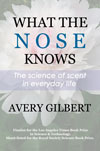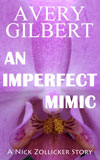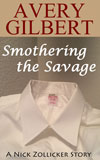
The torrent of celebrity fragrances spilling into the market shows no signs of slowing. Each season brings new perfumes by A-list divas, rappers and reality show cast members. Some of us question the quality of these offerings. We also wonder whether the sheer number of celebrity perfumes dilutes the market and confuses the consumer. Grousing about celebrity fragrances has become a numbing habit, like complaining about the weather.
Unlike the weather, however, celebrity perfumes are a human phenomenon. They keep coming to market because someone somewhere calculates that the financial rewards are worth the risk. I thought it would be enlightening and perhaps entertaining to shed some light on the business of celebrity scents. Who is giving the green light to all these perfume projects and supplying the risk capital for them? How good a job are they doing financially and creatively?
Our first target of interest is Parlux Fragrances, Inc., based in Fort Lauderdale, Florida. It’s a publicly held company that trades on the NASDAQ. The company produces high profile celebrity scents, including those by Paris Hilton, Jessica Simpson and Queen Latifah. Parlux did Marc Ecko’s Ecko, and Josie Natori’s Natori. They now have the rights to perfumes by Nicole Miller. A scent by shoe designer Vince Camuto is on the way this fall, and next year Parlux will launch a perfume by Rihanna. A Kanye West fragrance is planned for 2011 or early 2012.
Parlux sells about $150 million of perfume annually, mainly to department store retailers such as Bloomingdales, J.C. Penney, Macy’s, Saks, and Sears. It’s biggest customer is Macy’s which accounts for almost a quarter of its annual sales. Macy’s is such a large fraction of its business that Parlux is obliged under financial reporting rules to acknowledge that the loss of Macy’s as a customer would “have a material adverse effect on our total sales.”
An equally significant source of sales is specialty retailer Perfumania, a company with 370 stores located in outlet malls and regional malls in the U.S. Perfumania, like Macy’s, is a customer whose loss would seriously impact Parlux’s financials. There is another twist to this relationship: because the owners of Perfumania’s parent company (Perfumania Holdings, Inc.) also own a significant amount of stock in Parlux, perfume sales to Perfumania are reported as “related party sales,” about which we’ll have more to say.
So who does the actual work of creating the juice and the bottle and the packaging for all the Parlux perfumes? Here’s what the company says in its most recent annual report:
We design and create fragrances using our own staff and independent contractors. We supervise the design of our packaging by independent contractors to create products appealing to the intended customer base. The creation and marketing of each product line is closely linked with the applicable brand name, its positioning and market trends for the prestige fragrance industry. This development process usually takes twelve to eighteen months to complete.Stars don’t just wander off the street and into the company’s offices. How does Parlux secure the rights to a celebrity’s scent? Their people talk to the celeb’s people, and ultimately a deal is struck between Parlux and the celebrity’s corporate entity. For example, Paris Hilton Entertainment Inc. grants Parlux an exclusive license to develop, manufacture, and distribute prestige fragrances under the Paris Hilton name. The original license deal ran from 2004 to 2009 and spawned Paris Hilton (2005), Paris Hilton for Man (2005), Just Me (2005), Heiress (2006), Heir (2006), Just Me for Man (2006), Can Can (2007), Fairy Dust (2008), and Siren (2009). The deal was renewed for another five years and runs through June 30, 2014.

Parlux also has licensing agreements with VCJS, LLC (Jessica Simpson), Queen Latifah Inc. (Queen Latifah), Ecko Complex LLC (Marc Ecko), J.N. Concepts, Inc. (Josie Natori), and Kobra International, Ltd. (Nicole Miller). A deal signed with tennis star Andy Roddick in 2004 resulted in a single fragrance in 2008; Parlux opted to let the deal expire in March, 2010. Not every celebuscent hits the jackpot.
As if often the case with Parlux, there are unusual twists to the standard business model. Take the Rihanna and Kanye West deals, for example. Both artists licensed their worldwide fragrance rights to a company called Artistic Brands Development, LLC—as did entertainment mogul Shawn “Jay-Z” Carter. Artistic Brands, in turn, sublicensed these fragrance rights to Parlux. Who is behind Artistic Brands? None other than Jay-Z himself. The other principal in the company is a fellow named Rene Garcia. And thereby hangs a tale.
Rene Garcia, owns approximately 9.1% of Perfumania Holdings, Inc., which in turns owns Perfumania, Inc., the chain of retail outlets. Along with various family trusts and investment vehicles identified in S.E.C. documents as The Garcia Group, Rene Garcia’s interests include about 14.7% of the outstanding shares of Parlux. In December, 2009, Parlux issued warrants to Artistic Brands Development for the purchase of up to 8 million Parlux shares at a $5 exercise price, in return for sublicenses to the Rihanna and Kanye West fragrances. (The stock has traded in the $1.50 to $2.50 range for the past year; it will require quite a rise in price for those warrants to be worth anything.) The Artistic Brands deal makes Jay-Z more than a rapper willing to lend his name to a cologne—it makes him a player in the world of fragrance licensing. This is the sharp business acumen that has made him worth an estimated $450 million, according to the Wall Street Journal.
But back to Rene Garcia. He gets some Parlux warrants as Jay-Z’s development partner in exchange for fragrance rights to Rihanna and Kanye. Parlux—in which Garcia is a major shareholder—will produce these perfumes and sell them in large part to Perfumania, a company in which Garcia is also a major shareholder. Mr. Garcia has an uncanny ability to manifest himself simultaneously on several levels of the Astral Plane. He’s involved in the brokerage of celebrity perfume rights, in the manufacture of the actual perfumes, and in the retail sale of same. All that’s missing is a stake in a bottle-making company.
How solid is Parlux’s celebrity fragrance business? We know its business depends heavily on sales to Macy’s and on related party sales to Perfumania. It also gets the majority of its gross sales from the Paris Hilton brand products.
If Paris Hilton’s appeal as a celebrity were to diminish it could result in a material reduction in our sales of licensed Paris Hilton brand products, adversely affecting our results of operations and operating cash flows.Hmmm. Her summer drug busts in South Africa, France, and Las Vegas, and the resulting headlines (“Scandal-plagued socialite Paris Hilton has been voted the worst celebrity role model in a new online poll”) must be giving the Parlux folks some serious agita.
Celebrity fragrances are only as attractive as the persona they are built around. Kanye West continues to stir the pot following his infamous interruption of Taylor Swift at the 2009 VMAs, recently by trashing Lindsay Lohan’s fashion line. Is he out of control or cunningly good at keeping himself in the news? Either way, is this a persona that Parlux can build a franchise on?
Speaking of personalities, there’s a highly entertaining book to be written about the characters who hold the financial fortunes of Parlux in their hands. There is the cryptic and awesomely unGoogle-able Rene Garcia Group of south Florida. There is Frederick E. Purches, the founder and once-and-current CEO of Parlux. There is former CEO Ilea Lekach, dubbed “worst CEO of the year” in 2006 by MarketWatch. And best of all, there are brothers Glenn and Stephen Nussdorf who, along with their sister Arlene Nussdorf, control about 74% of Perfumania Holdings, Inc. They wrenched control of Parlux away from Lekach a few years ago in a proxy battle so overwrought it deserves to be told in the form of a graphic novel.




13 comments:
Well darling, it got to a pint that they are even using dead celebs to endorse perfumes. how that sound to you???
+Q Perfume:
You mean I have to start a new feature called "I Smell Dead Celebrities"?
Dead celebrities have one commercial advantage over living ones: their reputations are more or less fixed. No sex videos, no lip synching scandals, no abusing the household staff or misbehaving on TV awards shows.
The trick is to pick people who are famous mostly for being dead, like John Lennon or Sylvia Plath or Jean-Michel Basquiat.
Has anyone studied the life spans of celebrity scents? I would guess that sales peak within 6 months of introduction and start to fall after about a year. I'm making these numbers up. But I expect there's a need for new scents to replace those that are falling out of favor.
Hey, how about religious fragrances - burning bush, loaves and fishes, ...
How many scents does Paris Hilton have now? I think we need to see some new angles in celebrity perfume endorsement.
Fascinating. When researching an old fragrance a few months ago I found that many of these licensing companies are in Florida, mostly south Florida. Inter-resting. And quite ungoogle-able, too, most of them. As for Jay-Z, well, the business acumen of some of these guys is pretty amazing. Excellent sleuthing! And I haven't even clicked on the links yet...
EdC:
For years now fragrance marketing strategy has been to open big and cash in before the inevitable sag in sales. The days of gradually building an audience and creating a brand with "legs" are long gone.
Similar to the thinking in Hollywood.
Result: movies geared to adolescent males and perfumes geared to adolescent females.
Olfacta:
Interesting. Florida is already the ISDP capital of America. Is it also where old perfumes go to die?
I've got a question for you. As a fume-head and thoughtful reviewer, do you see an aesthetic trend from Paris Hilton (2005) through Siren (2009)? In other words, is Parlux building a valuable PH backlist or is it just churn and burn?
Um, do I lose my perfumista card if I confess that I've never smelled any of the Paris Hilton fragrances or flankers? I mean, they have them at TJ Maxx, but they're sealed and no testers...my guess is that they're just trying to squeeze as much out of that name as they can, before it loses it's value. Which it appears to be doing, rapidly. But, y'know, the word "aesthetic" -- it's kinda a big word to use when talking about Parlux, nomesain?
Olfacta:
I'm not expecting any great revelations from a line-wide sniffing of PH fragrances. It may consist of crap and crappier crap, along with some surprisingly passable crap.
Here's what I'd like to know:
Where do they fall on the fragrance map? Mainly sweet florals, for example, or all over the place?
Is there a tendency to copy, er . . ., pay homage to well-known perfumes?
Has the quality improved or declined with each new offering?
It would be fun to reverse engineer the Parlux marketing strategy and compare it to the financial results.
I'll try to find some with testers. Drugstores here lock their scents up now. Gotta go to Target today, I'll look and report back if I find anything. An interesting project!
Now you have me all curious about what a Sylvia Plath celebrity perfume might smell like, dang it.
And if you'd completed this article about three months sooner, I could have told you what every single Paris Hilton fragrance smelled like. But when we packed up to move to NZ, I dumped them all in the trash. I couldn't bear to commit them to skin unless I absolutely had to.
Friendship has its limits!
Nathan Branch:
The image of all those unused Paris Hilton bottles lying in a dumpster pains me. My bad. The interval between inspiration and posting can go long, but this one really got away from me. SEC documents are not easy to puzzle out--I literally had to draw diagrams to make sense of the relationship between Parlux, its associated entities, and the various people involved.
It would have been cool to pair my corporate profile with your take on the fragrances as fragrances. Too bad.
So . . . what do you think of a vertical sniffing of all 15 (16?) J-Lo perfumes? (I kid.) ((But not really.))
You know, I've read so much about the financial powerhouse of the Jennifer Lopez brand that I really should take the time to sit down and evaluate the line-up from both the creative and pop-branding perspectives.
I'd likely learn a lot. As well as find it fascinating to do research into which ones were the most successful and why.
Post a Comment